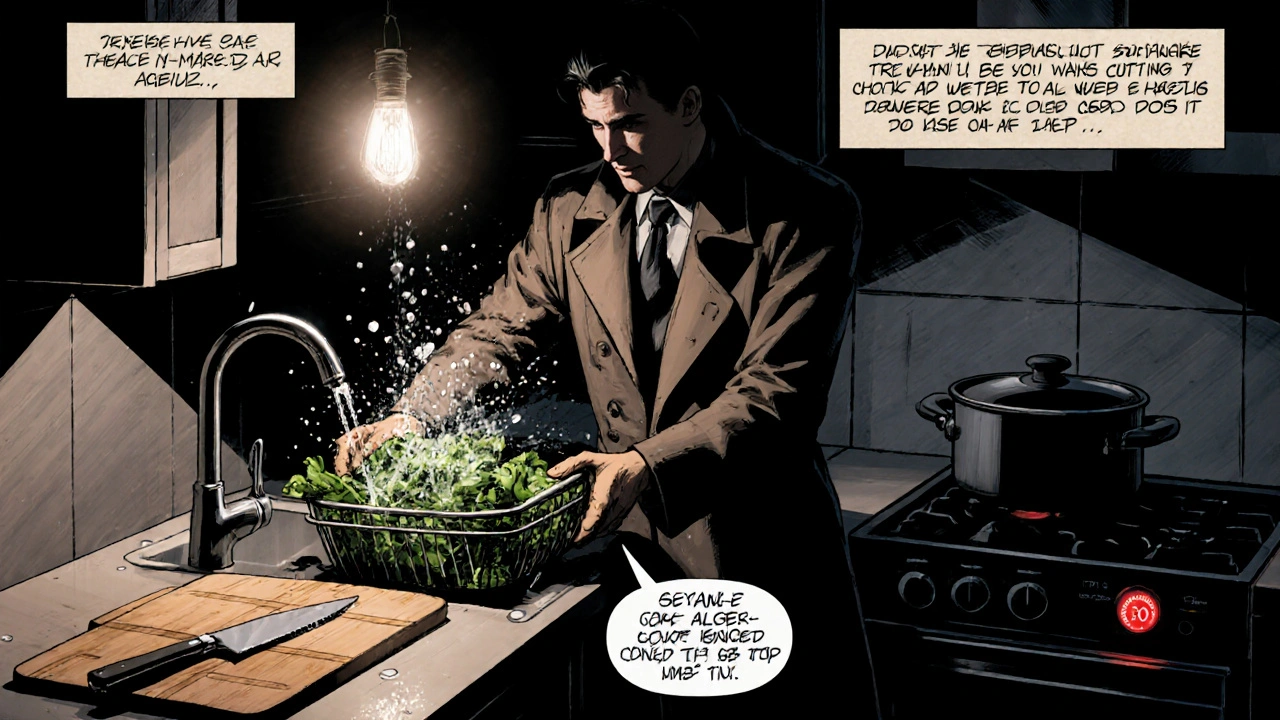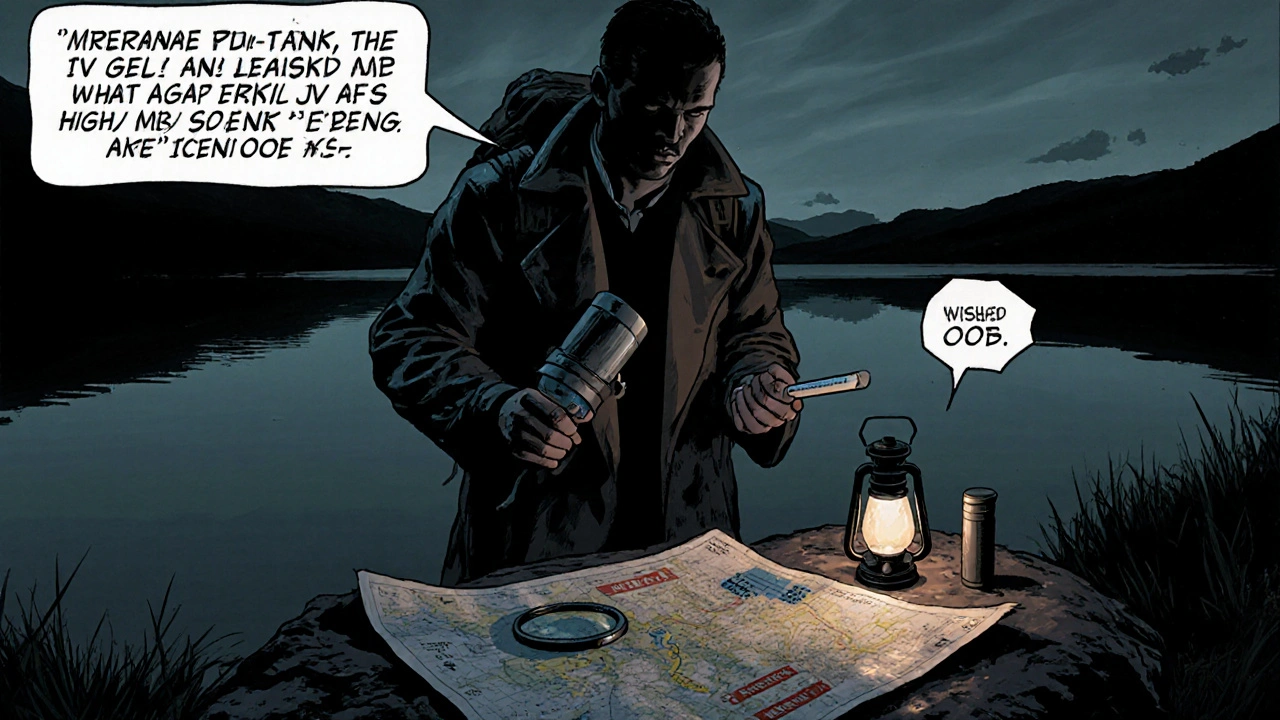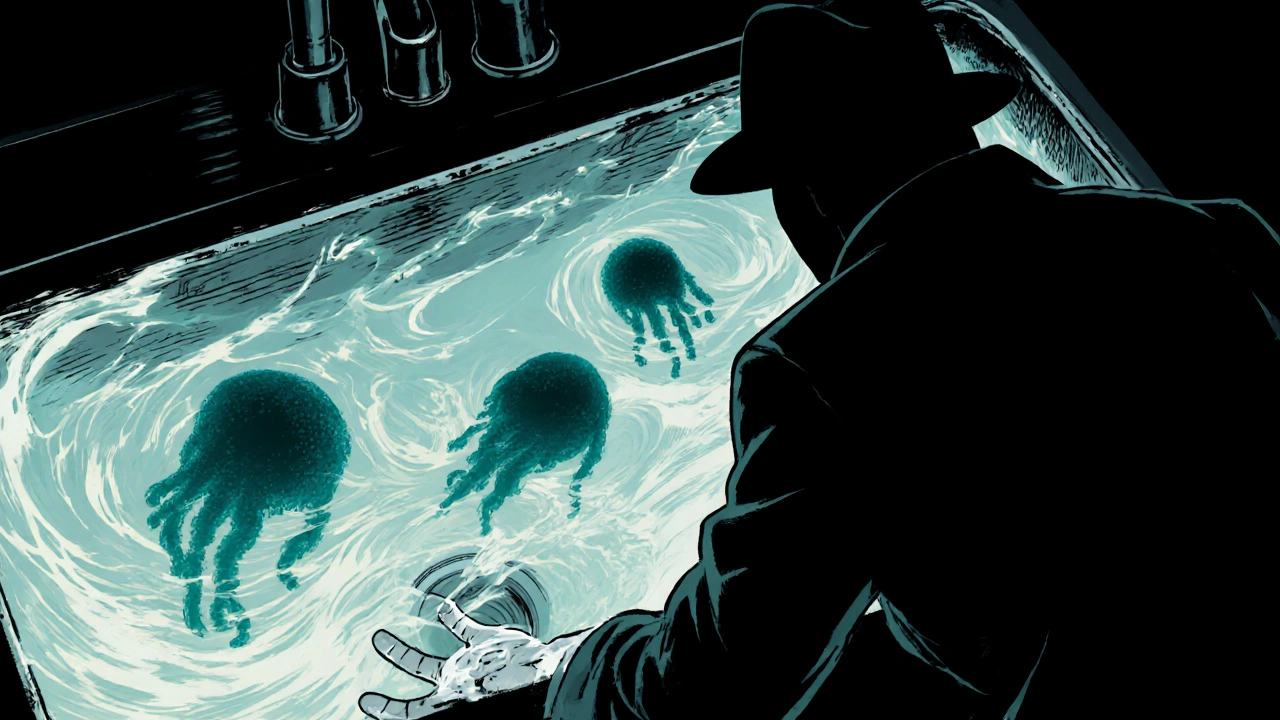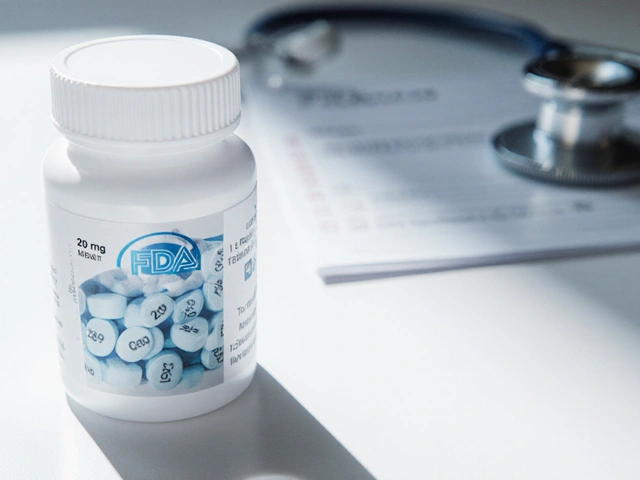Amoeba Safety Calculator
Assess Your Food Safety Protocol
Enter your cooking, water treatment, and washing practices to see if they eliminate pathogenic amoebae.
Safety Assessment
Enter your food preparation details to see if they eliminate pathogenic amoebae.
Amoeba infection is a disease caused by single‑cell parasites that can enter the body through contaminated water or food. These microscopic organisms thrive in warm, stagnant environments and can trigger anything from mild stomach upset to life‑threatening brain inflammation. Understanding how they spread and how everyday food practices can stop them is the first step to staying safe.
Key Takeaways
- Three amoebae-Naegleria fowleri, Giardia lamblia, and Entamoeba histolytica-are responsible for the majority of human cases.
- Warm freshwater, untreated municipal water, and raw produce are the biggest risk hubs.
- Proper chlorination, thorough cooking, and vigilant kitchen hygiene cut the risk dramatically.
- Early diagnosis and targeted medication improve outcomes for most intestinal infections; brain infections need emergency care.
Understanding Amoeba Infections
Not all amoebae are harmful. Many live harmlessly in soil and water, but a handful have evolved to exploit human hosts. When an Amoeba infection takes hold, it can manifest in two broad ways: intestinal disease (often called giardiasis or amoebic dysentery) and central‑nervous‑system disease (most famously primary amoebic meningoencephalitis, or PAM).
Symptoms vary by species. Giardia lamblia typically causes watery diarrhea, bloating, and nausea within a week of exposure. Entamoeba histolytica can lead to bloody stools, abdominal cramps, and, in severe cases, liver abscesses. In contrast, Naegleria fowleri invades the nose during activities like diving in warm lakes, traveling up the olfactory nerve to the brain, and producing rapid, fatal inflammation within days.
Common Pathogenic Amoebae
| Species | Typical Transmission | Key Symptoms | Incubation Period | First‑Line Treatment |
|---|---|---|---|---|
| Naegleria fowleri | Inhalation of contaminated warm freshwater (e.g., lake diving, neti‑pot use with non‑sterile water) | Severe headache, fever, nausea, stiff neck, rapid neurological decline | 1‑9 days | Intravenous amphotericin B plus miltefosine |
| Giardia lamblia | Ingestion of cyst‑contaminated water or food; person‑to‑person spread in childcare settings | Watery diarrhea, abdominal cramps, fatigue, weight loss | 5‑14 days | Metronidazole or tinidazole (7‑10 days) |
| Entamoeba histolytica | Ingestion of cysts in contaminated water or uncooked vegetables | Bloody diarrhea, mucus in stool, possible liver abscess | 2‑4 weeks | Metronidazole followed by a luminal agent such as paromomycin |

How Food Safety Reduces Risk
Most food‑borne amoebae hitch a ride on raw produce, fresh herbs, and unfiltered water. The Foodborne parasite risk chain looks like this: contaminated source → inadequate washing/handling → ingestion → infection. Breaking any link in the chain stops the infection.
Key safety pillars include:
- Proper washing: Use running potable water to rinse vegetables. Adding a splash of vinegar (1% acetic acid) helps detach cysts.
- Cooking at the right temperature: Heat foods to at least 70°C (158°F) for a minute. Boiling water for one minute kills cysts of Giardia lamblia and Entamoeba histolytica.
- Water treatment: Municipal water is usually chlorinated. Chlorination at a residual of 0.5mg/L retained for at least 30minutes inactivates most cysts. If you rely on well water, use a certified filter that removes organisms >1µm.
- Separate cutting boards: Use a dedicated board for raw produce, especially leafy greens, to avoid cross‑contamination from raw meat or seafood.
Prevention Steps for Home & Travel
Whether you’re cooking at home or backpacking in Southeast Asia, these habits keep you safe:
- Inspect water sources. Avoid swimming in lakes or rivers that are warm (>25°C) and stagnant. If you must, wear a nose clip to stop water from entering the nasal passages.
- Carry a portable water‑purification device. UV‑pistols or 0.2µm filters are proven against Waterborne disease agents, including amoebic cysts.
- For high‑risk activities (e.g., using a neti‑pot), use only pre‑boiled or sterile saline solutions. The CDC advises against tap‑water rinses.
- When dining out abroad, favor cooked dishes. Raw salads, fresh fruit, and unpasteurized dairy raise the odds of ingesting cysts.
- Teach household members, especially children, to wash hands after bathroom use and before meals. Hand‑washing with soap for at least 20seconds removes up to 99% of cysts.

What to Do If You Suspect an Infection
Early medical attention makes a huge difference. Here’s a quick action plan:
- Note the exposure: When, where, and what you ate or drank. This helps clinicians narrow down the likely organism.
- Seek testing: Stool antigen tests and PCR are the gold standard for Giardia lamblia and Entamoeba histolytica. For suspected Naegleria fowleri, a lumbar puncture and rapid PCR are critical.
- Begin empirical therapy: If a doctor suspects giardiasis, they may start metronidazole while awaiting results. For PAM, treatment must begin immediately, even before lab confirmation.
- Hydrate and rest: Diarrhea can cause dehydration; oral rehydration solutions (ORS) restore electrolytes.
- Follow‑up: Some intestinal infections require repeat stool exams to confirm clearance.
Frequently Asked Questions
Can I get an amoeba infection from tap water at home?
Modern municipal supplies in the UK are chlorinated, which inactivates most cysts. However, if the water system is compromised (e.g., a broken pipe) or you use untreated well water, the risk rises. Regular testing and maintaining a residual chlorine level of 0.5mg/L keep it safe.
Is boiling water enough to kill all harmful amoebae?
Yes. Bringing water to a rolling boil for at least one minute destroys cysts of Giardia lamblia and Entamoeba histolytica. For Naegleria fowleri, the organism cannot survive temperatures above 50°C, so boiling is more than sufficient.
What are the warning signs of primary amoebic meningoencephalitis?
Early symptoms mimic flu: severe headache, fever, nausea, and a stiff neck. Within 48‑72hours, patients develop confusion, seizures, and rapid neurological decline. Because the disease progresses quickly, any suspected exposure plus these signs warrants immediate emergency care.
Do probiotics help prevent giardiasis?
Research from the University of Liverpool (2023) showed certain Lactobacillus strains modestly reduce Giardia attachment in the gut, but they are not a substitute for proper hygiene and safe water. Think of them as a supplemental boost, not a cure.
How can I tell if my home’s chlorination is adequate?
Purchase a free‑chlorine test kit from a hardware store. A reading of 0.5mg/L (or 0.5ppm) after a 30‑minute contact time indicates effective disinfection. If the level is lower, increase the chlorine dose or consider supplemental UV treatment.
Next Steps
Start by reviewing the water sources you use at home and on your next trip. Keep a portable filter or boiling kit handy, and make a habit of washing produce under running water with a splash of vinegar. If you ever feel unwell after a suspicious exposure, contact your GP or local NHS urgent care promptly-early treatment can mean the difference between a quick recovery and a serious complication.




Narayan Iyer
October 16, 2025 AT 10:33Yo folks, let’s break down the amoeba thing like a tech stack for the gut.
First off, Naegleria fowleri is the horror‑movie villain that loves hot lakes and nose‑dives.
Giardia lamblia? Think of it as the low‑level bug that crashes your digestive OS with watery diarrhea.
Entamoeba histolytica steps up the game, turning stools into a bloody log file you definitely don’t want to debug.
The infection pipeline starts with a contaminated source, slides through sloppy washing, and lands straight into your intestines.
If you’re into DIY water filters, remember the pore size has to be sub‑micron (<1µm) or you’ll just be passing cysts like VIPs through the security checkpoint.
Chlorination is the classic anti‑virus patch – keep that residual at 0.5 mg/L for half an hour and you’ll wipe out over 99% of the parasites.
When you’re on the road in SE Asia, pack a UV wand or a 0.2 µm filter; they’re the firmware updates that keep your sip‑stream clean.
Cooking isn’t just about flavor, hitting 70 °C for a minute is the equivalent of a hot‑fix that nukes cysts in veggies and meat alike.
Don’t forget the cutting board hygiene – color‑code them or you’ll get cross‑contamination bugs that spread faster than a meme.
If you suspect you’ve been exposed, the fastest diagnostic API is a stool antigen test for Giardia or a PCR for Naegleria.
Metronidazole is the go‑to library for giardia, while amphotericin B plus miltefosine is the heavy‑duty runtime for brain‑invading Naegleria.
Hydration is your memory management – oral rehydration solutions prevent your system from crashing under fluid loss.
For kids, teach hand‑washing like you’d teach a password policy: at least 20 seconds, soap, and no shortcuts.
And always log your exposure details – when, where, what you ate – it’s the breadcrumb trail for clinicians to trace the bug.
Bottom line: stay vigilant, treat water and food like you’d treat code – sanitize, validate, and deploy safe practices, and you’ll keep those nasty amoebae out of the production environment.
Amanda Jennings
October 17, 2025 AT 14:20Great rundown! I love how you turned the science into everyday actions. A quick reminder: keep that vinegar rinse handy and don’t skip the 20‑second hand wash – it really does the trick.
Shweta Dandekar
October 18, 2025 AT 19:30Wow!!! This guide is absolutely comprehensive!!! I can’t stress enough how important it is to boil water!!! Even a minute at a rolling boil is a game‑changer!!!
John Barton
October 19, 2025 AT 23:16Oh sure, because we all have a personal lab to test water quality before we sip it. Next you’ll tell us to wear hazmat suits at the grocery store.
Grant Wesgate
October 21, 2025 AT 01:40Totally agree! 👍 Keeping a tiny UV pen in the backpack is a lifesaver. Also, don’t forget the silicone‑safe cutting board – it’s the unsung hero! 😄
benjamin malizu
October 22, 2025 AT 06:50While the advice is generally sound, let’s not overlook the moral duty to advocate for municipal infrastructure upgrades. Over‑reliance on individual mitigation perpetuates systemic negligence.
Maureen Hoffmann
October 23, 2025 AT 09:13What a solid list! For anyone feeling overwhelmed, start with one habit – like washing veggies under running water with a splash of vinegar – and build from there. You’ve got this!
Alexi Welsch
October 24, 2025 AT 14:23It is imperative, therefore, that entities engaged in public health policy implement stringent chlorination protocols, ensuring residual concentrations meet or exceed the stipulated 0.5 mg/L threshold for a minimum duration of thirty minutes.
Mike Privert
October 25, 2025 AT 16:46Thanks for the thorough breakdown. I’ll definitely be checking my home water system and maybe adding a UV filter for extra peace of mind.
Kartikeya Prasad
October 26, 2025 AT 21:56Super helpful! 🌟 If you’re traveling, a portable 0.2 µm filter combined with a small stove for boiling water covers both bases. And remember, a little vinegar rinse can work wonders on fresh produce.
HARI PRASATH PRASATH
October 28, 2025 AT 00:20But you should also not trust any brand, they are liars.
Andrew Miller
October 29, 2025 AT 05:30Honestly, reading all these recommendations feels a bit overwhelming, but I guess taking one step at a time is better than doing nothing.
Yareli Gonzalez
October 30, 2025 AT 07:53Love the practical tips! Adding a vinegar soak to your routine is a simple change that can really reduce risk.
Alisa Hayes
October 31, 2025 AT 13:03Just a small note: it’s “chlorination” not “chlorinationn”. Small typo there.
Mariana L Figueroa
November 1, 2025 AT 15:26For those using neti‑pots, sterile saline is the only safe option.
Garima Gauttam
November 2, 2025 AT 19:13In the grand scheme, cleanliness is an illusion, yet we chase it like philosophers chasing truth.